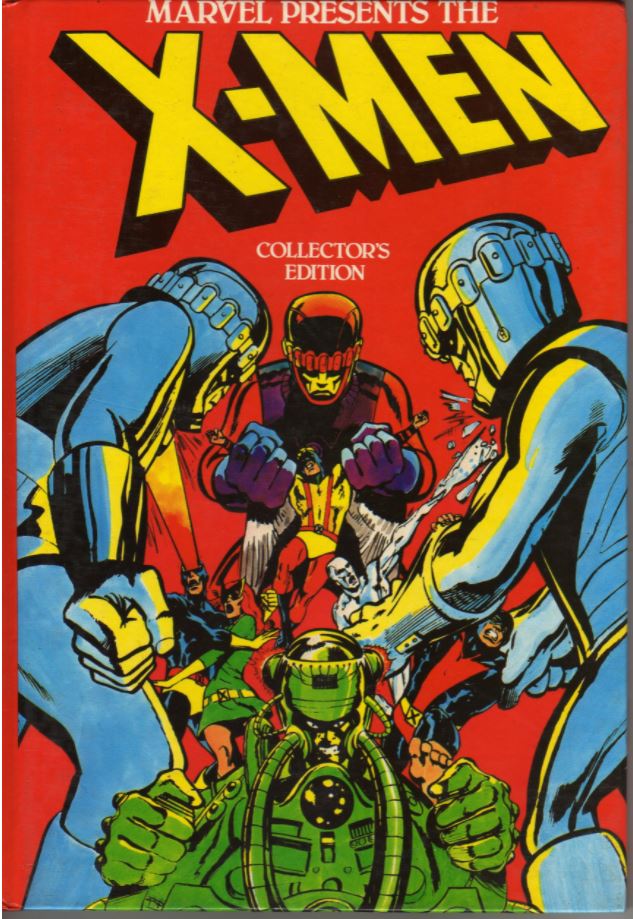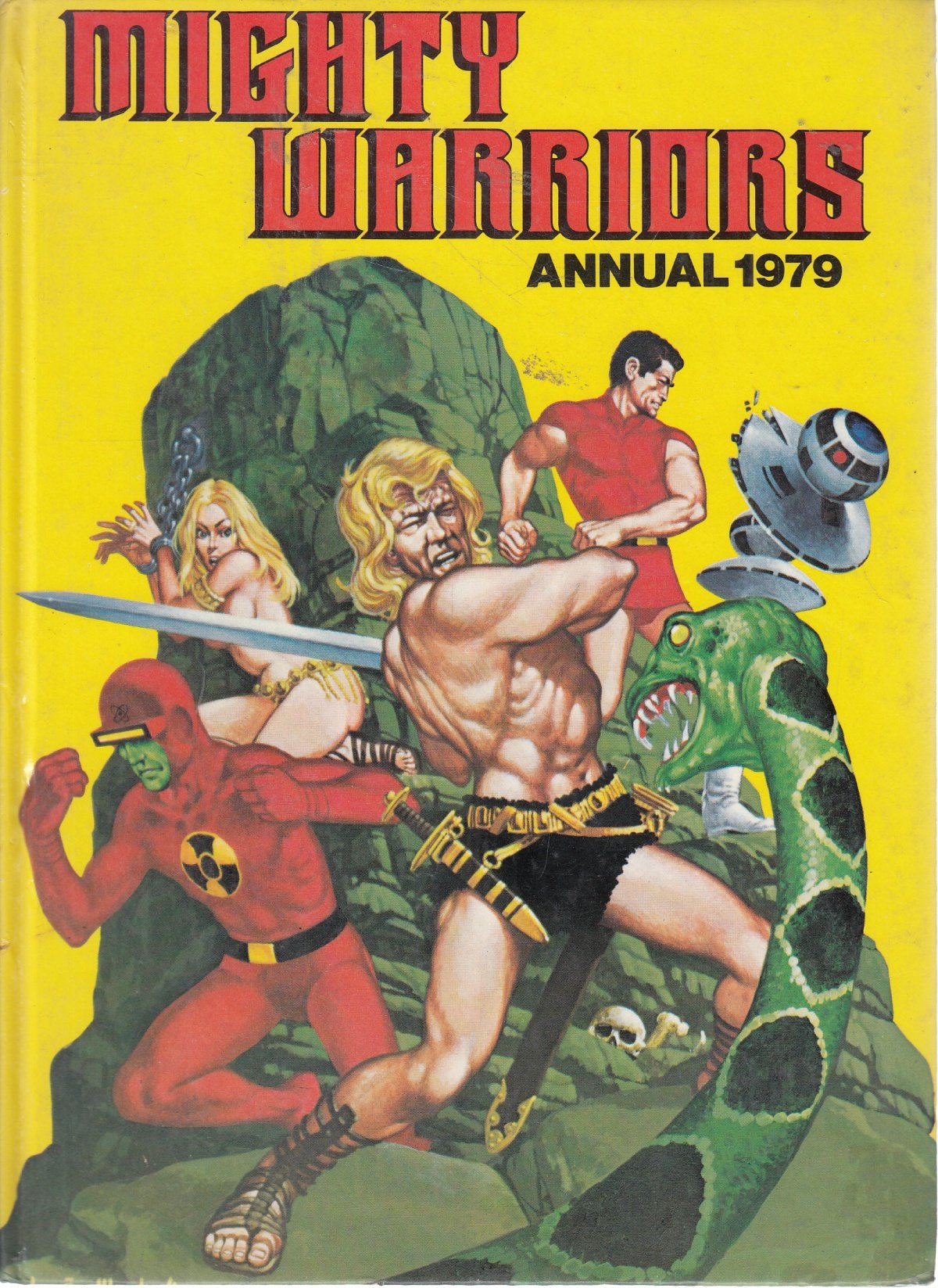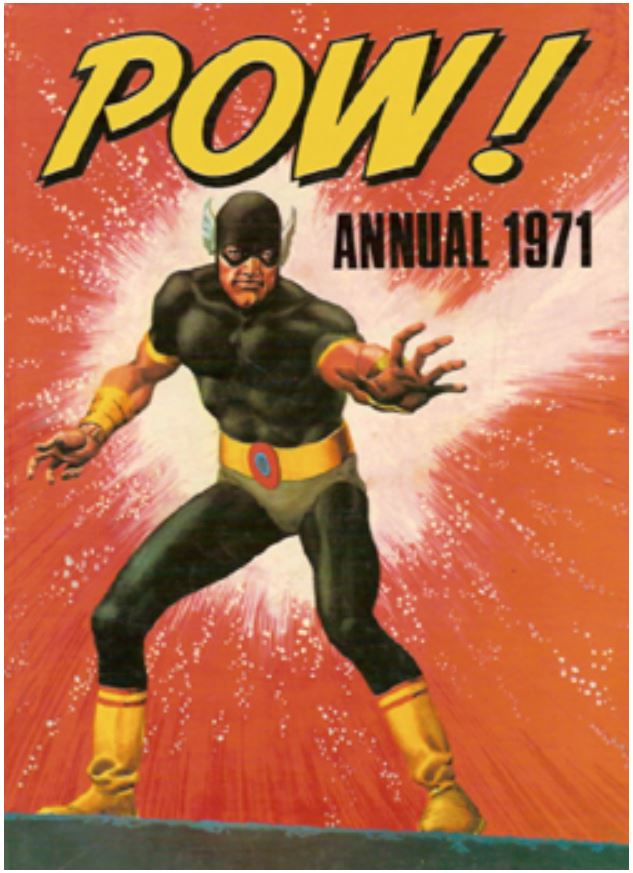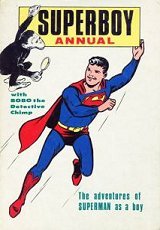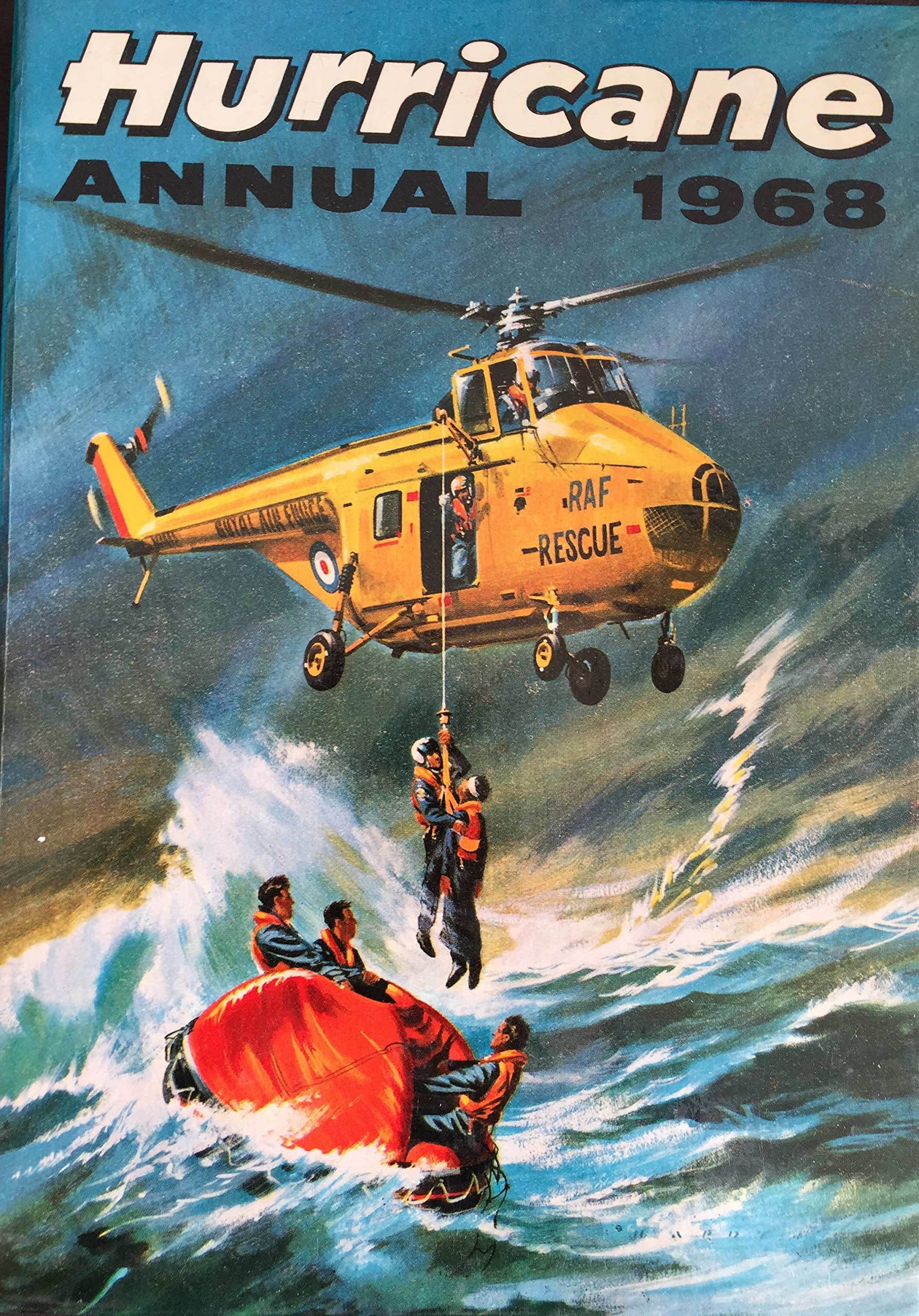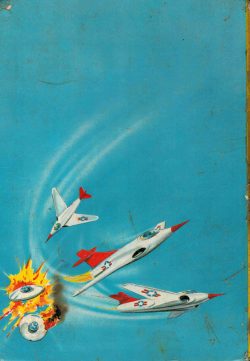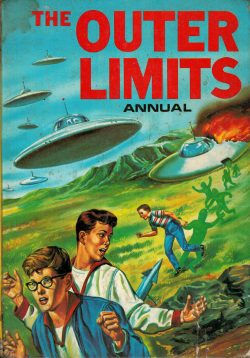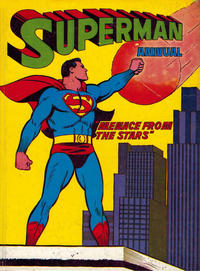The comic has been with us a long time now and debate still continues about where, when and exactly what constitutes the first of these artefacts to truly earn the title. There’s a lot less debate about the Children’s Annual: a particularly British institution and one that continues – albeit in a severely limited manner – to this day.
It’s a rare and tragic individual who never received a colourful card-covered compendium on Christmas morning; full of stories and comic-strips and usually featuring the seasonal antics of their favourite characters, whether from comics such as The Beano, The Dandy, Lion, Eagle and their ilk, or TV, film or radio franchises/personalities such as Dr Who, Star Wars, Thunderbirds, Radio Fun or Arthur Askey. There were even sports and hobby annuals and beautifully illustrated commemorative editions of the fact and general knowledge comics such as Look and Learn, and special events such as the always glorious Rupert Bear or Giles Annuals.
Here then is a brief celebration of the kinds of genre celebrations which delighted kids and their parents…
The Parsley Annual – including The Herbs – 1973
By Liz Tosker, T. Manwood & Jenny Reyn (Polystyle Publications)
SBN: 85096-027-4
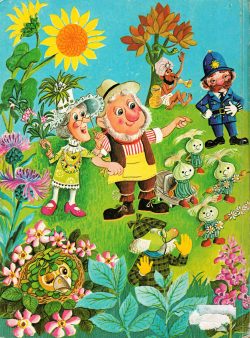
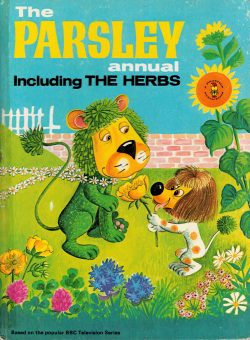
The British comics marketplace has always benefitted from television shows for the very young, probably because most of those enterprises (until very recently at least), were particularly brilliant and well made. There’s no one from my generation or younger whose eyes do not mist over when thinking of Camberwick Green, Mr. Ben, Mary, Mungo and Midge, Trumpton, Paddington, Crystal Tips and Alastair or anything even remotely connected to the names Postgate & Firmin. The shows are always infinitely rewatchable, ceaselessly smart yet whimsical, and saturated with the easy charm that makes viewers into fanatical acolytes.
The Herbs were a product of production company FilmFair (Graham Clutterbuck’s UK division, anyway), with 13 stop-motion episodes debuting from 12th February 1968. Those quarter hour larks were followed in 1970 by 32 5-minute segments of The Adventures of Parsley that ran Monday to Friday before the Six O’Clock News on BBC 1 from April 6th. As was always the case with the “Watch With Mother†shows, episodes were repeated for years after production ceased.
The stories were written with devious sophistication by Paddington Bear author Michael Bond, ensuring adults were as enthralled as the intended audience, and all revolved around a magical and so-very-English Garden beyond a tantalising wall. Access was briefly granted by the utterance of a magic word and inside, people and animals lived together on an idealised Manorial estate, each an avatar of a particular herb.
Parsley was an affable lion, there was an owl named Sage and a dog called Dill, as well as so many, many others. It was instantly addictive and remains popular today through collections and on YouTube.
The show generated seven Annuals between 1969 and 1975: a beguiling mix of stories, strips, and interactive games, puzzles and activities, produced by BBC Books and media adaptation comics specialists Polystyle Publications. This one was released at the end of 1972, crafted by writers Liz Tosker and T. Manwood and illustrated by Jenny Reyn, opening and closing with double-page frontispiece and endpapers depicting the cast indulging in resolutely British sporting relaxations.
The entertainment proper opens with prose mystery ‘Parsley is Brought to his Senses’ wherein the rather nervous and timid lion worries that his tail has gone missing and is curtly told by Bayleaf the Gardener that what he’s lost is his senses…
A semantic miscommunication then prompts an hilarious investigation of his sensorium, embellished by a pictorial Smell, Taste, Touch, Hearing and Sight game, after which ‘Parsley’s Swop Shop’ opens the comic strip chapters, as the Herbs all trade unwanted items to no overall conclusion whilst ‘Parsley – Detective’ sees the hero in action after Dill’s buried bones go missing…
Lady Rosemary‘s wash day goes awry when Dill gets involved in the ‘Bubble Trouble’, before another prose tale sees the Lion again reading his Magic Book, and misconstruing what “the King of Beasts†means in ‘King Parsley’, after which Constable Knapweed takes action on the Lion’s dubious driving skills in strip delight ‘Parsley’s Anchor’…
A mystery picture puzzle to colour-in precedes a prose rite of passage and test of resolve for ‘Parsley the Hero’, duly followed by a game of ‘Dingo’ devised by that dog and the Chives, and a prose vignette detailing Parsley’s ‘Nice Idea’ to make skating on the frozen pond less traumatic…
An identify and colour-in Fruit Game and an age-appropriate Crossword is followed by a cautionary comic strip warning about ‘Green Apples’ and prose tale concerning Parsley’s reluctant return to school in ‘A long time ago’ leads expeditiously to one final story, with ‘Magic Word’ detailing the perils of overusing the potent exclamation “Herbidaciousâ€â€¦
Rendered primarily in full vivid colour with occasional bursts of traditional two-hued pages, this book remains remarkably readable to modern eyes and would happily stand as an easy-reading starter for beginners of all ages. It’s also still wonderfully fun and funny. Don’t take my word for it though: just trying saying that magic word…
© Polystyle Publications 1972. © FilmFair 1972.
Voyage to the Bottom of the Sea Annual 1968
By Mick Anglo, Dick Wood, Marshall McClintock, Tuska George, Alfredo Giolitti and many & various (World Distributors {Manchester} Ltd.)
No ISBN
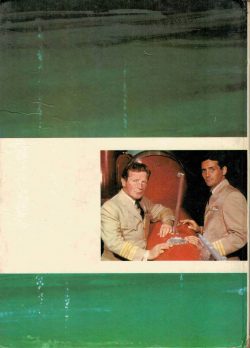
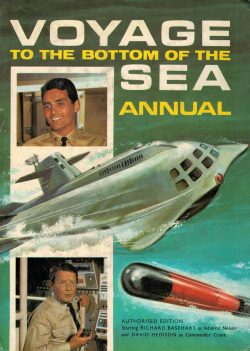
British comics have always fed heavily on other media. As television grew during the 1960s – especially the area of children’s shows and cartoons – those programmes increasingly became a staple source for the Seasonal Annual market. There would be a profusion of stories and strips targeting not readers but young viewers and more and more often the stars would be American not British.
Much of this stuff wouldn’t even be as popular in the USA as here, so whatever comic licenses existed usually didn’t provide enough material to fill a hardback volume ranging anywhere from 64 to 160 pages. Thus, many Annuals such as Daktari, Champion the Wonder Horse, Lone Ranger and a host of others required original material – generally in illustrated prose form – or, as a last resort, similarly themed or related strips.
Voyage to the Bottom of the Sea debuted in America on September 14th 1964, the first of producer Irwin Allen’s incredibly successful string of TV fantasy series which also included Lost in Space, Land of the Giants and The Time Tunnel. It ran until the end of March 1968 before going to the Valhalla of permanent syndication. The set-up involved super-advanced submarine Seaview encountering aliens, monsters, villains and disasters – natural or otherwise – guided by senior savant Admiral Harriman Nelson and Commander Lee Crane and a doughty crew of expendables…
The action begins with terse, tense drama ‘Ten Thousand Feet of Ice’ as Seaview is trapped beneath the North Pole and faces a nuclear catastrophe before ingenuity and luck save them all, after which a selection of illustrated fact features begins with a look at some bizarre ‘Creatures of the Deeps’ and a reviews of whale species in ‘“Thar She Blows!‒
‘Rock of Terror’ then finds the super-sub investigating a spate of strange shipping losses and crashing into a sinister submerged citadel of evil, after which the comic strip section opens with a reprint from the Dell/Gold Key US series.
‘The Great Undersea Safari’ originated in Voyage to the Bottom of the Sea #5 (August 1966 and possibly written by Dick Wood and/or Marshall McClintock and drawn by Tuska George, Alfredo Giolitti & Giovanni Ticci), revealing how the Seaview and Nelson are stalked by a deranged White hunter who turns the oceans into his private game ranch before meeting his fate on dry land…
Back to UK-originated prose stuff again and ‘Prehistoric Venture’ finds Seaview investigating melting icecaps and battling defrosted dinosaurs, accompanied by a feature on actual ‘Sea Beasts of the Past’, after which an inevitable yarn discloses how the ultra-modern submariners encounter and barely escape ‘The Lost Atlantis’, leading into all you need to know about subsea exploration in ‘Divers All!’: themed boardgame ‘Seaview Treasure Hunt Game’ and a history of submersibles in ‘Dive! Dive! Dive!’ before everything ends on a note of frantic fantasy as our heroes apparently encounter ‘King Neptune’…
These yearly slices of screen-to-page magic were an intrinsic part of growing up in Britain for generations and still occur every year with only the stars/celebrity/shows changing, not the package. The show itself has joined the vast hinterland of fantasy fan-favourites and, if you want to see more, in 2010 Hermes Press has collected the US material – which I’ll get around to reviewing one day (so many books, so little time or budget)…
© MCMLXVI, MCMLXVII, by Cambridge Productions Inc. All rights reserved throughout the world. By arrangement with Western Publishing Company, Inc, Racine, Wisconsin, USA
Donald and Mickey Annual 1976
By Many & various (IPC Magazines)
SBN: 85037-202-X
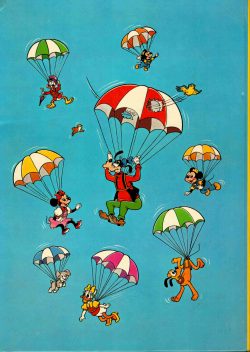
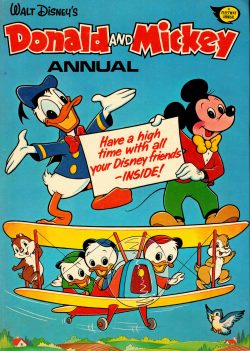
The works of the Walt Disney Studio have been part of global culture since 1928 with their comics spin-offs similarly dominant since the 1930 Mickey Mouse newspaper. These days the publishing empire of Disney properties spans continents, but they have always been a mighty force in comics.
In 1935, Mickey Mouse Magazine launched in the USA, and was supplemented in Britain a year later by an astoundingly beautiful and high-quality photo gravure tabloid counterpart. Mickey Mouse Weekly ran from 1936 to 1957. Although still a presence after that, the franchise only really revived after Disney TV shows became commonplace in the UK. In 1972 Fleetway released Donald and Mickey which ran from March 4th until August 1974, by which time it had morphed into Mickey and Donald and absorbed companion title Goofy.
There were four annuals, of which this is the last…
Following ‘What’s Inside’ and a welcoming message from “the Editor‒, the blend of strips (culled from all over Europe and the USA) and home-generated puzzles and games open with crime spoof ‘The Hound of Basketville’: a product of the Walt Disney Theatre wherein Sherlock Mouse and Doctor Goofy riff effectively on the Conan Doyle classic…
Donald and Daisy Duck go disastrously shopping for gifts in ‘Slappy Birthday’ and ‘Uncle Scrooge McDuck’ pays a high price for his innate parsimony before a prototype photo-infomercial reveals the wonders of new Disneyland attraction ‘The Haunted Mansion’, but it’s comics fun as usual in ‘Super Hungry Hero’ when peanut-powered Super-Goof battles the dastardly Beagle Boys…
Enthusiasm trumps common sense when ‘Mickey Mouse’ employs a pelican to deliver fish before ‘Scamp (Son of Lady and the Tramp)’ learns the painful pros and cons of staying up late, leading to a puzzle section comprising ‘Robin Hood’s Spot the Difference’, a photo packed ‘Disquiz’ and ‘Famous Disney TV Faces’.
Prose vignette ‘Top Trail Marker starring Big Bad Wolf’ segues into a ‘B-Wildering Puzzle’ after which ‘The Mouseketeers’ details the development of the company’s television treats. Activity page ‘Draw Fethry Duck’ leads to single gags courtesy of ‘Goofy’s Jest for Fun’, 8 Colour-It-Yourself images, ‘Peter Pan’s Shadow’ join-the-dots page, ‘Moby’s All-at-Sea Crossword’ and a spot the difference poser in ‘Puzzled Pluto’…
Frenetic and fractious team-up ‘Search for Luck’ unites Chip ‘n’ Dale and the Seven Dwarfs whilst ‘Goofy’s Laughter Lesson’ painfully shares ‘How to be A Gentleman’ before the brainteasing resumes with a vengeance in ‘O’Malley’s Fun & Mystery’, after which inventive Gyro Gearloose causes chaos as ‘The Weatherman’.
A round of short gags follows – ‘It’s Goofy!’, ‘Donald Duck’ and ‘It’s Uncle Scrooge again!’ before final puzzle ‘Wanted- Help for Goofy’, leads into a comedy of errors as the pals squabble over tickets for ‘The Wrestling Match’, ‘Pluto’ is sucked into chase-sparked calamity, leaving Donald and Daisy to wrap things up in style when the daft drake adopts strident libertarian leanings in ‘Free and Easy’…
Straightforward all-ages whimsy and a high recognition factor always made these items a popular parental standby, but the quality of the material is what us kids always remembered.
Check out yourself, why don’t you?
© Walt Disney Productions, 1975
